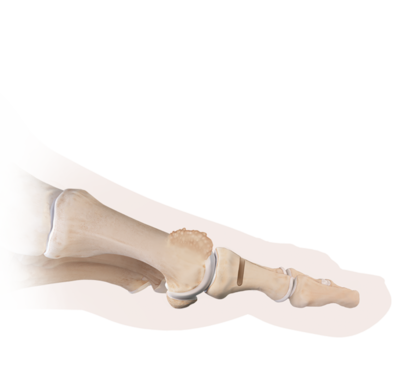Finally, it's the day of the post-op hospital visit. Because of the Covid-19 pandemic (and other stuff), all these types of procedures are being done in a suite at a small private hospital near the airport, so it's a 70 mile round trip from where I live (even though usually I'd go a few minutes down the road to the County hospital in my town). So needed have someone drive me.
Meanwhile I tested out what shoes I'd take to replace the surgical shoe.
Once at the hospital I had a couple of x-rays (which required me to weightbear on the foot). The screw I had inserted is clearly visible on the pics, still not quite sure what its purpose is!
The one above shows the diminished space between the MTP joint where the cartilage is missing.

All looks good according to my podiatry surgeon (Dr James Alvey). The incision wound is still a bit weepy - it's been in the compression bandage a couple of very hot weeks - so it really needs exposure to air now to finish off healing. So no sea swimming still for a bit until that wound is properly sealed. There are no stitches to be removed as I have dissolvable sutures.
WARNING graphic image. Click to see the incision wound.
I managed to get my shoe on (the foot is still quite swollen so it's really tight, but apparently that helps compress the foot to help with the swelling) and hobble out the hospital to the car park.
I'll be honest, it was painful and I was a bit alarmed. But it's normal at this stage because the toe doesn't bend, and any pressure on it to do so is going to hurt.
I didn't get a great night sleep - a combination of the now unprotected toe stretching suddenly and causing pain, and a cramp under the foot in the middle of the night that needed attending.
What's next?
I had a cheilectomy and periarticular closing wedge osteotomy (to give me a little more flex than the cheilectomy alone - due to diminished cartilage).
The osteotomy will add a little more to my overall recovery timeline (and I've also read somewhere that as a rule-of-thumb, add up a month for each decade of life to get an idea of the initial period for recovery - so in my case that's around 5.5 months)
These images show the osteotomy in some detail.
So now I need to start a regime of physio and wear a supporting shoe (that doesn't somehow rub the still-not-quite healed wound too much).
For the next two weeks I have to somehow hobble around - looks like I'll still need help with shopping and walking the dog - and perform some exercises a couple of times a day.
Here's the guidance notes I've been sent home with:
From 2-4 weeks following surgery:
Footwear: You should change to a 'roomy' trainer type shoe. You may need to wear a size larger than normal or remove the laces. It will feel tight and probably a little sore compared to your post-op shoe, but it will actually help reduce the swelling.
Walking: From now on, you should increase your walking with care. You can start to gently roll off the ball of your foot. It is normal for this to be a little uncomfortable. The foot will be more swollen at the end of the day than at the beginning, and it will take many months for the swelling to disappear altogether. If the foot becomes very painful, reduce your activity (as you are overdoing it). During the next couple of weeks try to concentrate on walking as normally as comfort will allow, but more slowly and gently than your normal walking pace. Wherever sitting or resting, you should still have your foot raised up level with your hip.
Joint exercise: You may now start to actively exercise the joint by moving it upwards and downwards using your fingers. Sit with your recovering foot crossed over your other leg (which should be straight) above the knee. Hold the big toe joint with one hand and move the big toe up and down with the other. Push the toe up and down to the point where it is uncomfortable, and then push just a little more - this can be difficult to do yourself and you may need someone to do this for you. Do this for 5 minutes, twice each day. It is normal for this exercise to be mildly painful - but you are doing the joint good and it will help towards getting full movement back in the toe. If this exercise becomes extremely painful, you are pushing too hard.






Comments
Post a Comment